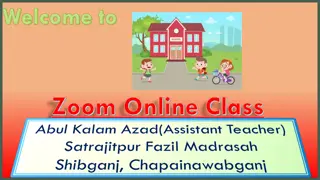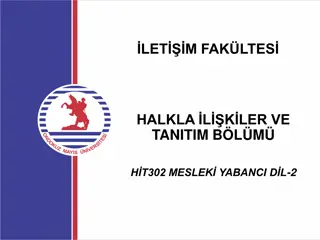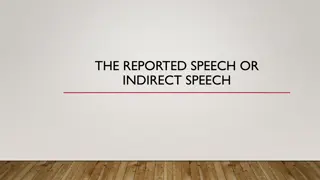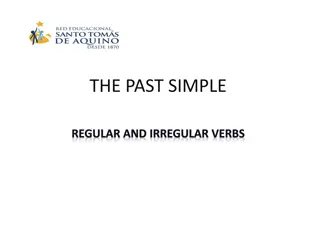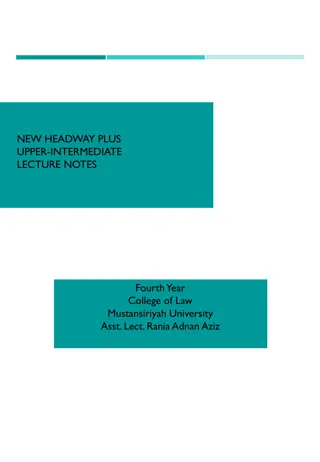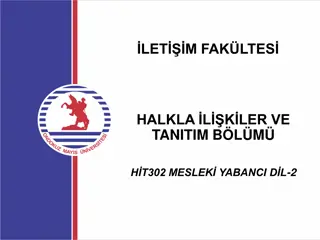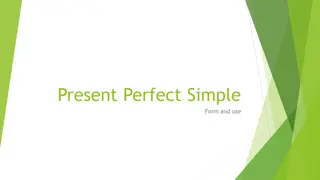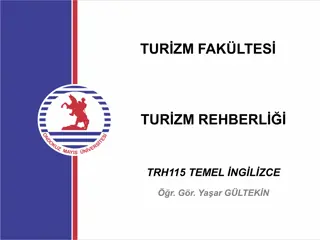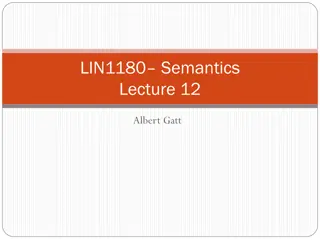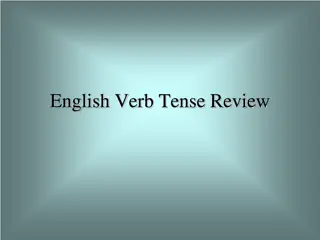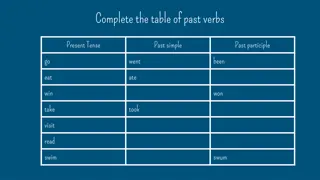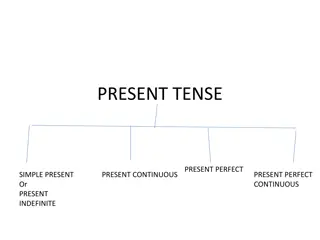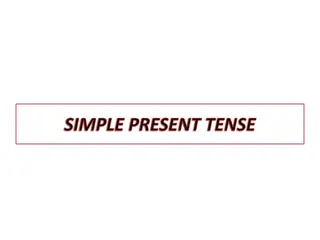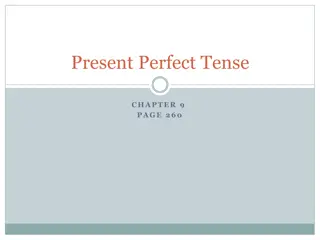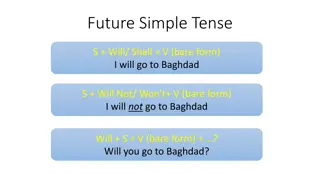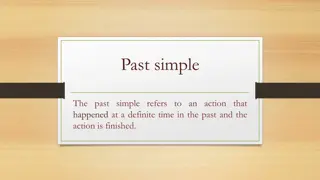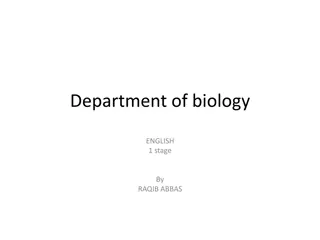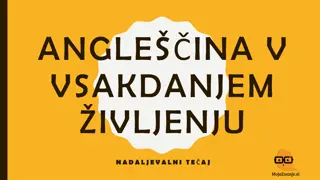Learning Present Simple Tense
In this guide, you will learn about the present simple tense in English grammar. The content covers the formation of affirmative, negative, and interrogative sentences in the present simple as well as its different uses, such as talking about general truths, habits, instructions, repeated actions, and scheduled events. By the end, you will have a clear understanding of how to use the present simple tense effectively in various contexts.
Download Presentation

Please find below an Image/Link to download the presentation.
The content on the website is provided AS IS for your information and personal use only. It may not be sold, licensed, or shared on other websites without obtaining consent from the author.If you encounter any issues during the download, it is possible that the publisher has removed the file from their server.
You are allowed to download the files provided on this website for personal or commercial use, subject to the condition that they are used lawfully. All files are the property of their respective owners.
The content on the website is provided AS IS for your information and personal use only. It may not be sold, licensed, or shared on other websites without obtaining consent from the author.
E N D
Presentation Transcript
It is called simple because it is simple to form as the verb consists of one word only. THE I/we/you/they+ base verb . I work hard. You work hard. They work hard. We work hard. THE FORM FORM (Affirmative) (Affirmative)
She/he/it +base verb + s.. She works hard. He works hard. It works. THE FORM (Negative ) I/we/you/they+ do not + base verb He /she / it+ does not+ base verb I don She does not like mango. THE FORM (Negative ) I/we/you/they+ do not + base verb He /she / it+ does not+ base verb I don t like mango. She does not like mango. . . t like mango.
THE FORM (Interrogative ) Do + I/we/you/ they+ base verb Does+ she / he/ it+ base verb Do you like mango? Does she like mango? THE FORM (Interrogative ) Do + I/we/you/ they+ base verb Does+ she / he/ it+ base verb Do you like mango? Does she like mango? ? ? .? .?
1- It is used to talk about general truths, habits, and unchangeable situations Human body contains 206 bones. He drinks tea at breakfast. I live in Basra. 2- It is used to talk about repeated actions. She often drinks coffee in the afternoon. He never works after 5 pm.
3- it is used to give instructions and directions. Open the closet. You turn left, then go straight, you will find the bank. 4- To state how often we do things. I go shopping twice a month. 5- To express scheduled events in the future such as time tables and public transportations The train leaves at 5:00 pm. We fly to Paris next week.
6- something the moment we say it), the present simple is used. I promise I will study hard this year. I suggest you go to dentist. when saying equals doing ( we do


